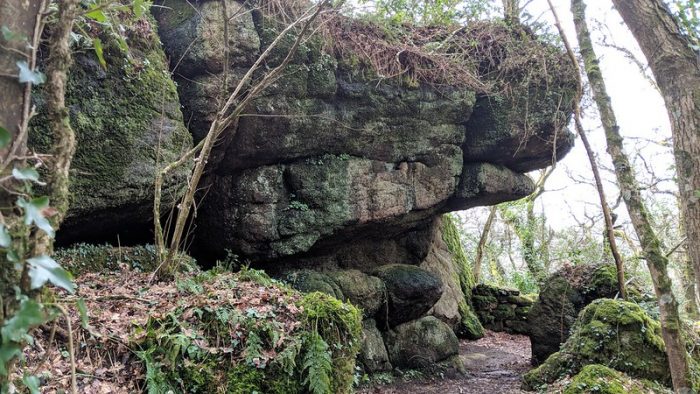These two terms are used several times in The Hound of the Baskervilles, one of The Greatest Adventures of Sherlock Holmes. Dr Watson uses these often when describing the moor. I looked them up just to be sure I could imagine the setting correctly, and I found this wonderful definition at the Discovering Sherlock Holmes website by Stanford University.
Cairns and Tors – “”Cairn” is a loose term for a pile of stones, usually marking an ancient burial place. A “tor” is a natural granite outcropping on the moor, exposed by years of weathering. Granite bedrock lies under the moor, keeping water from draining away, so that the ground remains saturated.”
I found this great website with many pictures and histories of the tors around Devon in England: Tors of Dartmoor. Below is a picture of Bowden Tor. You can see the outcropping of rock and the ground below which may remain marshy in wet seasons. Dr Watson described the moor in The Hound of the Baskerville as having many tors. I wonder if Sir Arthur Conan Doyle had an exact place in mind when he wrote The Hound. It must have been a lovely place to be, even when he added threat of a cursed hound.

